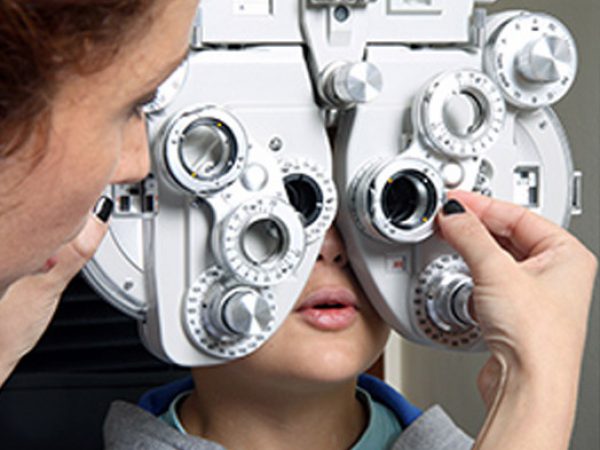Paediatric Ophthalmology Services
Paediatric Ophthalmology is a subspecialty of ophthalmology dealing with problems common to, or seen exclusively in, children. Paediatric eye is totally different from an adult. The brain cells that control our vision are not fully developed, or mature, when infants are born. These cells are developed throughout the first decade of life. Because of the immaturity of the child’s visual system, disorders that may have little effect on an adult’s ability to see can have a profound and life-long effect on a child’s vision. Poor vision due to inadequate stimulation of these brain cells, amblyopia, is a common cause of loss of vision in this age group. Some disorders are only seen in children. It is difficult to examine a child. Paediatric ophthalmology is quite a fascinating branch. The process of acquiring the art of child examination is exciting since it is a constantly changing and evolving field. The general ophthalmologist and subspecialist are taught most of their paediatric ophthalmology during their training and many new advances and current concepts are not well disseminated into the ophthalmic community.
The All India Ophthalmological Society was established in the year 1930. In 1943, Frank D. Costenbader an American physician Dr. Costenbader limited his practice to children and became the first paediatric ophthalmologist. Although Paediatric Ophthalmology Departments are being set up in the tertiary care eye hospitals, strabismology has been recognized as a distinct subspeciality in India for decades. Many tertiary eye hospitals in India established a Strabismus Department as early as in the 1960s. The Strabismological Society of India was founded in 1982. Strabismus is a misalgnment of the eyes. It includes crossed eyes (esotropia), out-turned eyes (exotropia) and other eye-muscle disorders. Because strabismus is treated so often by paediatric ophthalmologists, many paediatric ophthalmologists also treat adults with strabismus
India is in a transitional state addressing treatable and preventable causes of blindness. In India, about 320,000 children are blind, resulting in a prevalence of 0.08%, according to the Website of Orbis International, a nonprofit agency dedicated to eliminating unnecessary blindness. Major causes of childhood blindness include corneal scarring secondary to vitamin A deficiency, congenital cataract, Retinopathy of Prematurity (ROP), and congenital glaucoma.
Childhood examinations: The State of Illinois requires a professional eye examination within 12 months of a child starting kindergarten. If this examination is normal, yearly examinations by an eye professional are not needed for most children. Children should see an eye doctor if they fail a school screening examination, if an eye examination is recommended by a physician, or if they develop vision related complain. If there is a family history of amblyopia [lazy eye] or muscle problems, consulting a paediatric ophthalmologist is mandatory in the age group between 8-12 months.
Trinity has initiated concrete steps to introduce a state-of the art Paediatric Ophthalmology department in the upcoming Trinity Eye Hospital with all ultra modern infrastructure and facilities at par with global standards.



